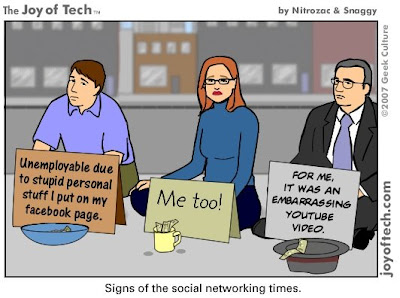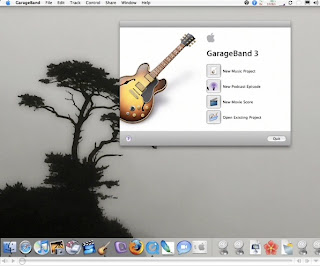
The blog is the new resume. At least according to software developer Adam Darowski and others joining in on this conversation on his blog. Darowski names at least three benefits to thinking of your blog as a potential resume: a blog gives potential employers a more complex sense your role on a project, your day-to-day activities and your personality.
Since our internship program at ITSRG emphasizes career skills, here's an activity that you might try with your group in order to bring home the idea that a blog is an enduring and findable public representation of yourself and therefore should be taken seriously.
1. Have students read the posts listed above or another article about using social media for professional purposes or minding their online identity.
2. Lead a discussion focused on the benefits of having a findable and professional online identity. Address the dangers of inappropriate content, but don't dwell on them. The idea is not to make them scared of being found online. Instead, get them thinking about how having a positive online presence can help them achieve their career goals.
2. Have students work in pairs and have them imagine that they are interviewing each other for a job. You can assign them a specific job to interview for, ("imagine that you are applying for a position as a community organizer") or you can ask them about their career goals and have them imagine applying for an entry-level position in their desired career track.
3. If students already have resumes, have them exchange resumes with each other. Then, task each "potential employer" with using the information provided in the resume to find the "job candidate's" online presence. Let students know that they can search anywhere on the web they want. Suggest Google and Facebook for starters. You may want to try to find a few students first to see if any of them already have an online presence so that you can be prepared for the outcome of this exercise. If you prefer, you can simply ask students to examine each other's blog posts.
4. Let them know that as a "potential employer" they will need to present their hiring recommendations to the rest of the company at the end of their search. They will need to keep track of what they find by saving the links to a word doc and taking notes as they go. You may ask that they organize the presentation around these questions:
*Based on your online search, what skills and work experience does this job candidate appear
to have?
*What kinds of things are they interested in? What special knowledge do they have?
*Does the job candidate have a professional online presence? Please explain.
5. After each "potential employer" presents his or her hiring recommendations, discuss some ways that the job candidate could continue to improve his or her online presence.





